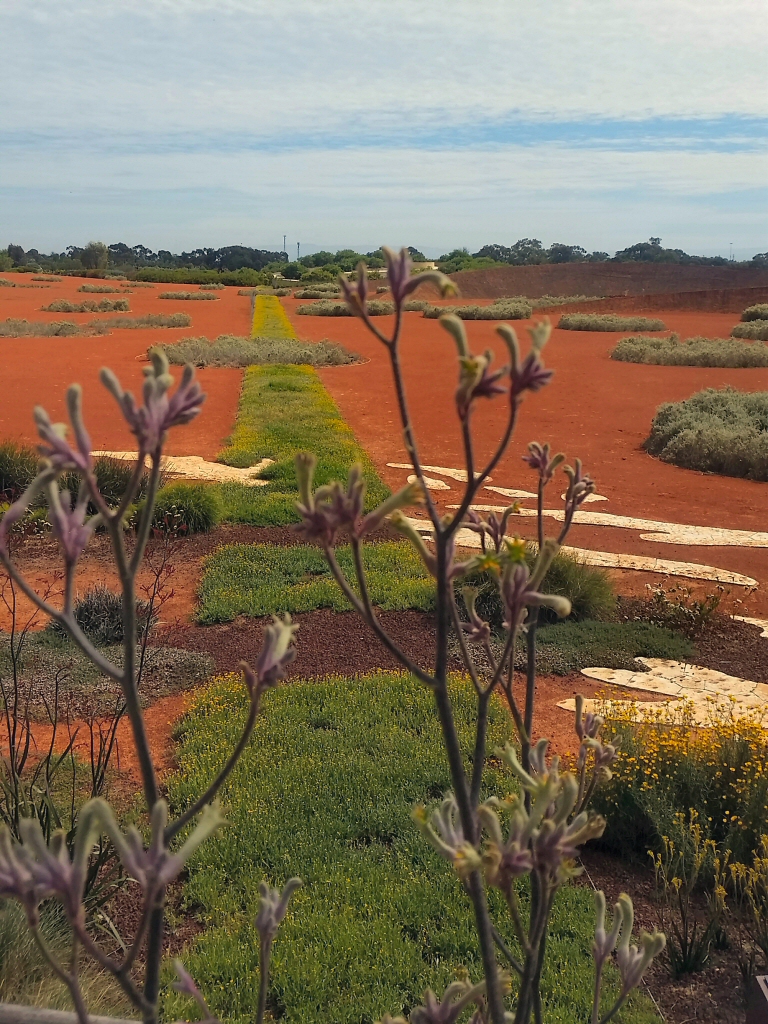The Kangaroo Paw Celebration 2016 at Cranbourne Royal Botanic Gardens
The Royal Botanic Gardens Cranbourne went all out to make this event a spectacular success. It was a career highlight for me, and I really want to thank the Royal Botanic Gardens Victoria, Cranbourne Gardens and their Friends organization, and in particular Chris Russell and John Arnott from the Gardens staff, and most of all to those wonderful Friends, Rodger and Gwen Elliot for their hard work, support and vision in creating this event. There were too many highlights to mention them all. I do want to mention the Symposium on Kangaroo Paws, Cotton Heads and Blood Roots of the plant family Haemodoraceae, organized by the Friends.
The Symposium was a three day event that featured Professor Stephen Hopper as keynote speaker. To introduce you to this amazing man I will draw a quote from the University of Western Australia’s website biography:
“Professor Stephen Hopper loves plants, especially Australian plants. The internationally renowned plant conservation biologist gave up his job in England as Director of the world heritage-listed Royal Botanic Gardens in Kew, to take up a new Chair in Biodiversity at The University of Western Australia – and promptly moved to Albany.
“I went to Kew in 2006 as the first non-British born Director with a simple aim – to ensure the world, biodiversity and the organisation were in a better place by the time I left. Biodiversity has an enormous role to play in helping moderate the worst aspects of global warming and in enabling people to live healthy, sustainable lives,” Professor Hopper said.
The amazing biodiversity in Western Australia is one of the reasons Professor Hopper was drawn back to Australia in 2012.
“It was the pull of the country, my country” he said. “Australia is one of the great places on the planet to pursue biological studies.”
Professor Hopper enthralled the Symposium participants with his knowledge and research work. I was particularly fascinated with his work on the ethnobotany of this extraordinary plant family. In other words, the human interaction with these plants, and in particular, the use of kangaroo paws as a bush food (the white fleshy bases of the leaves can apparently be eaten as a source of carbohydrate, moisture and fibre), whilst the rhizome of the Blood Roots (Haemodorum species) has various uses as well. It occurred to me that we have barely scratched the surface of knowledge that the Aboriginal people built up over tens of thousands of years, and also how important it is to support the work of people like Professor Hopper in liaising with Aboriginal elders to help document their knowledge in a respectful and compatible way.
My profound thanks to everyone involved in organizing and executing the Kangaroo Paw Celebration!
If you’d like to see more from this event>>>>
How to grow a better plant- the importance of soil
I’d like to share this picture with you from the festival sales table, which beautifully demonstrates the critical role that your plants growing medium plays in their healthy development and maintenance. The collection of plants in the picture below are all exactly the same variety, same pot size, same age of the plant, grown in the same nursery space. You can see the ones without labels in the centre two rows are performing quite differently to all the other rows. The only difference is the soil mix.
DIY Christmas Decorations
If you want to create your own unique Aussie Christmas decorations, here’s a bit of inspiration for you- twiggy stars and some Chistmas bells to hang in your tree or anywhere you like! This is a great way to get the kids away from their screen too, and uses very cheap or free items.
We took some prunings and some garden tie wire and string, and in a few minutes had some rustic stars. Cut the twigs to the same lengths. Arrange them into a star shape. Cut a length of light tie wire or string, and beginning at one point of your star, make a couple of turns of wire to hold the two sticks in place. Continue the wire wrapping, giving a couple of extra turns at each point where your sticks meet. Once you reach the end, fashion a hanging hook, and snip your wire or string off.
Now for your Christmas bells. Find a picture of Christmas bells, and draw one of the bells onto a plain sheet of paper. We cut the stem so that it acts as a hook for hanging too. Two sheets of red and yellow felt, PVA glue and the paper pattern you created is all you now need. Place your pattern onto the red felt and draw around it, then cut this shape out. Use the bottom half of the paper pattern to draw the yellow part of the bells, and go a bit free form for the top of the yellow section so that each bell looks different. Stick the yellow part onto the bottom section of the red bell with your PVA glue. If you want, you can cut two yellow parts so it looks good from both sides. Let dry, and we have some Aussie Christmas bell decorations. Hang them in your Christmas tree, add them to a wreath, or like here, on an earthy rope to match the look of the stars. Or you could go sparkly with some tinsel or add them to your strings of lights.
I wish you all a very merry Christmas, and a happy new year.






